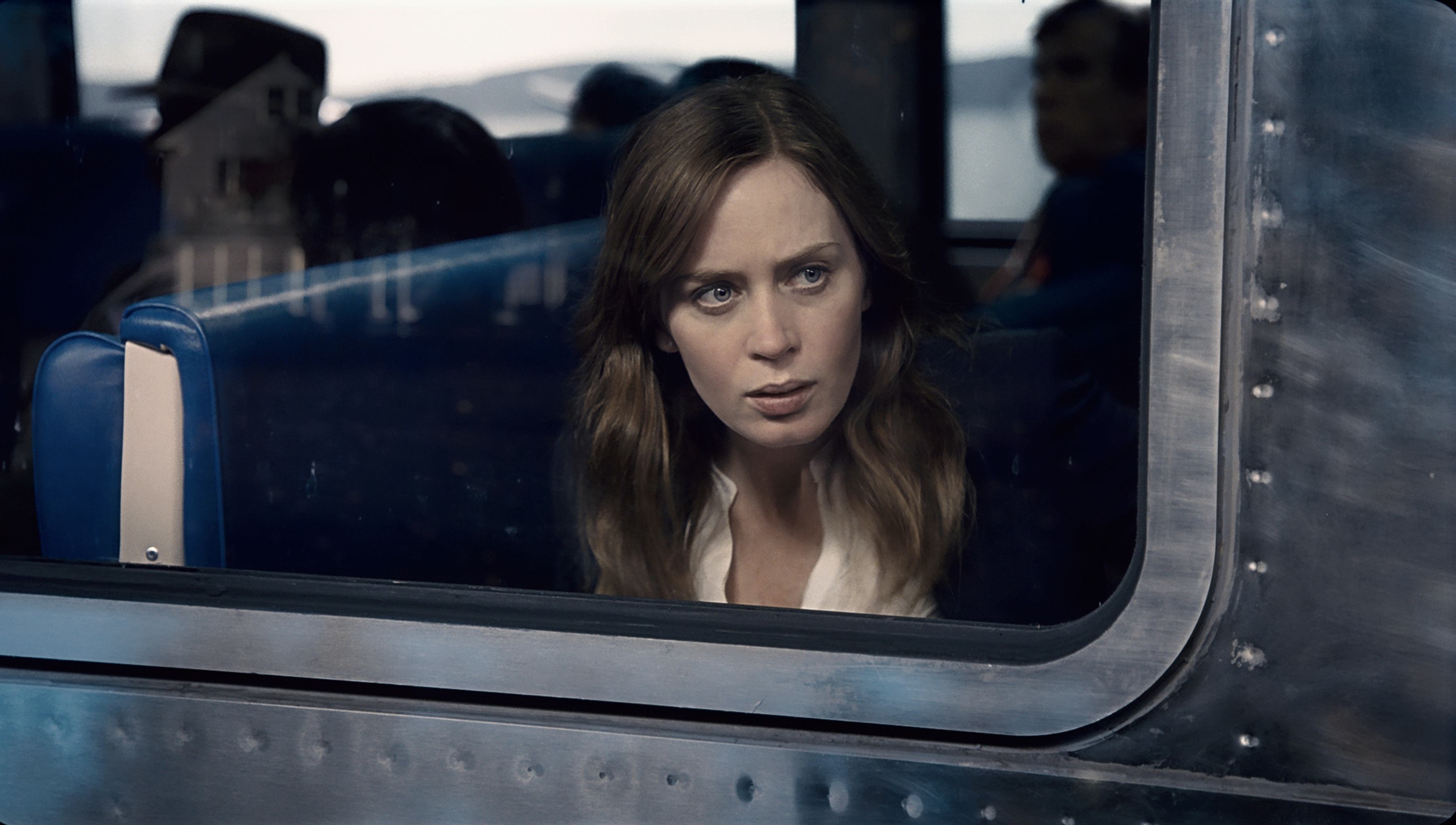 |
| Emily Blunt stars in The Girl on the Train. Image courtesy Universal Pictures. |
The Girl on the Train opens with the eponymous commuter Rachel (Emily Blunt) declaring in a voiceover that she has an overactive imagination. The point of the line and the others that spill out from Rachel’s mind during the opening is to put the viewer inside the unfiltered mind of the film's featured character while revealing her unreliability as a narrator. That she immediately stops telling the story is a problematic approach to the set up, as the film shifts away from her eyes to incorporate the stories of token housewife Anna (Rebecca Ferguson) and the soon-to-be missing Megan (Haley Bennett) to connect the three women to one singular narrative. It essentially took less than five minutes for this film to defeat the purpose of its introduction, along with much of the intrigue of its existence.
Alas, this isn't an unexpected flaw in a film full of them. The Girl on the Train is a silly little blunder that tries ever so hard to be lurid and dangerous but comes off instead as an above average Lifetime film with a hint more steaminess. Its central mystery is easy to resolve once the main players – the three women along with characters played by Luke Evans, Justin Theroux and Edgar Ramirez – are introduced and settled in. It features mediocre to subpar performances – even the oft great Blunt can't make the material work in her favor – and misused moments from the usually sublime Lisa Kudrow and Allison Janney, along with some perfectly preposterous dialog. The scenes are shot cold and distant as a film like this could be, but the movie lacks quality cinematography and the aesthetics are those not belonging to a film with this wide of release. Everything is so serious, and the tone is so poorly established, the movie sets itself up to be glorious camp, especially whenever Theroux enters to snack on scenery. The Girl on the Train would be a much more entertaining film had the filmmakers followed Theroux’s example and inserted a smirk in every scene.
What's truly weird about the whole experience is the heavy emphasis on motherhood among the three female characters and how the concept of being a mother effectively defines their femininity. All three women are influenced by a child in some capacity, be it having one, losing one, or being unable to conceive at all, and their personalities are tailored to what level of ability they have for it. The only one of the three granted any perception of happiness is the one willing to trade her independence and hope to be with a monster to raise her child; the other women are depicted as incomplete and empty. The concept is inherently regressive and dehumanizing (although it does result in the best bad line of the film) and the extremes the filmmakers take it is disturbing. The Girl on the Train effectively punishes characters for their failures as mothers through characterization (Blunt's Rachel as a morose alcoholic) and through physical pain as the film progresses. That the film could serve as a criticism for society's blame in these categorizations is moot considering how often the film luxuriates in Rachel's sadness and the pain wrought to the other women.
Blunt's Rachel is the source of many of The Girl on the Train's ailments. As the key to the mystery of the missing woman, the film uses her alcoholism as a way to obfuscate the mystery while faulting Rachel for not doing more to stop the crime she eventually solves. It would work in a Memento fashion if the film constructed the narrative around her and the memories she can't recapture as it teases a possible violent streak aroused during her states of inebriation. But the incorporation of the other women and their stories negates the impact of her lost memory and the possibility of her being the person responsible for the disappearance. The audience isn't required to trust Rachel to understand the story; rather, viewers watch her stumble about and wait for the memories of the night in question to reappear again and indicate the most logical candidate for the crime. (On a side note, the film does a rather poor job employing red herrings.) Watching an alcoholic stumble through an investigation is less interesting than interpreting his or her lost memories, and the film never seems to capture this, or any concept, it aims to depict.
Rating: Two out of Five Stars
Click here to see the trailer.
Rating: R
Run time: 112 minutes
Genre: Thriller
Ask Away
Target audience: Those who read and love the book.
Target audience: Those who read and love the book.
Take the whole family?: The “R” rating is fair enough, so stick with that and keep the kiddos at home.
Theater or Netflix?: Stream to pair it with a low-priced pinot grigio.
Does this pass the Bechdel test?: I had this discussion with a woman who came with me to see it, and we couldn't really come up with a solid answer for it. Despite the film centering on three women, their discussions are either about a man or an issue related to a man. The closest the film gets to not having that discussion involves conversations Lisa Kudrow has with other women about bad restaurants, and those are more background noise than anything. That the film apparently elicited a description as a “sausage party” overheard by my fellow moviegoer underlines the aforementioned issue.
Watch this instead?: Every time I see Justin Theroux, I want to watch Mulholland Drive or Inland Empire. And because I always recommend Mulholland Drive, you should also sit down and watch Memento to see how a film can effectively work with a memory lapsing protagonist.
No comments:
Post a Comment